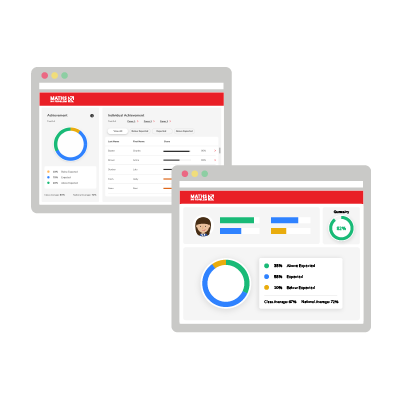Teaching remotely? These quick assessment checks are built into Maths — No Problem! resources
Remote teaching can make routine assessment difficult. Try these quick assessment checks in your next lesson to keep your learners on track.
Effective assessment practices is a conversation that continues throughout your teaching career, and it’s a top priority whether your students are learning remotely or in the classroom.
Teaching with Maths — No Problem! in your school? Here are three quick assessment checks to help you check in on learner progress and ensure core concepts are prioritised.
1. Identify what’s necessary and what’s nice to know
Children have had large chunks of time learning remotely, and while everyone has adapted to working in the ‘virtual classroom,’ there’s no escaping the fact they’ve lost time to cover all the curriculum content.
So what can be done? It’s important that schools and teachers take time to clarify which curriculum objectives are ‘necessary’ and which are ‘nice to know.’
Being clear on your priorities will allow you to assess learners on the non-negotiable concepts and give you an in-depth understanding of where a child is at, instead of attempting to assess every child on every objective (and potentially risking having only a surface level understanding of each child).
If you use the Maths — No Problem! Programme, we’ve made it a bit easier for you. Teacher Guides includes a Content Catch Up feature that indicates which lessons are key to know, and which lessons are nice to know if time allows.
2. Check for conceptual understanding vs instrumental and conventional understanding
If a child is struggling with a mathematical idea, it’s important to check if the issue is with their conceptual understanding, or with their understanding of the procedure and convention.
This idea of different kinds of understanding in mathematics was developed by British psychologist Richard Skemp. Skemp’s research suggests there are two kinds of understanding needed for understanding mathematics: conceptual and instrumental understanding. Another essential type of understanding for learning mathematics is conventional understanding.
Conceptual (or relational) mathematics: focuses on establishing connections, building understanding over time, applying concepts to other problems, and gradual increases in complexity.
Instrumental mathematics: centres around rote learning, memory, rules and correct answers.
Conventional mathematics: is understanding that a mathematical convention is a fact, name, notation, or usage which is generally agreed upon by mathematicians.
Expressions are a useful example of conceptual understanding vs instrumental and conventional understanding. If a child is struggling with expressions, it’s important to check whether it’s an instrumental or conventional issue, where they may not be applying the order of operations correctly. Or is it a conceptual issue? Do they have issues with using the operations to find the total?
Developing an awareness of the different kinds of understanding will help you effectively identify why a student may be struggling with a concept.
If it’s an instrumental or conventional issue, the solution will likely be exposure and explicit telling. If the issue is conceptual, then tailored interventions with concrete resources may be necessary.
3. Recognise built-in assessment opportunities
The Maths — No Problem! Programme has a number of built-in assessment opportunities — some more obvious than others.
The easy ones to recognise are the end-of-chapter reviews and end-of-year summative assessments. But, the workbooks have quick assessment check opportunities too.
Let’s break it down.
Every lesson in the Maths — No Problem! Programme is linked to a curriculum objective and includes corresponding workbook pages. What you might not realise is that the corresponding activities are divided into number sections and the activities get progressively more difficult.
The sections work with these guidelines:
Part 1: a child knows the basics and concepts.
Part 2: a child knows the basics and concepts, and can solve familiar problems.
Part 3: a child knows the basics and concepts, and can solve unfamiliar problems.
Not every child needs to complete every section of the workbook pages assigned to the lesson. Some children will only have an understanding of the basic concept, while others will be able to apply the concept to unfamiliar problems.
Because every lesson is linked with a curriculum objective, in general terms, we can use their independent work to make quick observations.
For example, if a student consistently can only complete the first sections, we might say they are working towards the curriculum objective. If they can complete the middle sections, they might be working at the expected level. And if they consistently complete all workbook pages accurately, they could be working confidently.
Understanding the workbook structure allows us to see at a daily glance how students are tracking against the curriculum objectives.
Now more than ever, we need to be really clear about what core knowledge students need to know. Implementing effective, low-stakes quick assessment checks to track progress is going to be integral to ensuring students move onto the following year group with as little impact on learning as possible.
Transform your maths assessment
Insights — our online assessment tool — gives you instant, powerful data to identify gaps and improve results.

